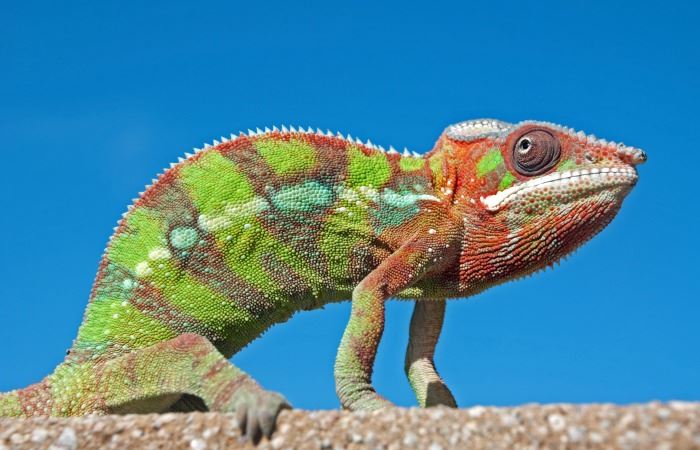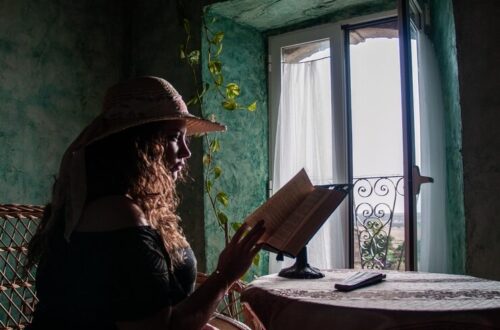Imagine standing in a lush rainforest, the air alive with the haunting calls of indri lemurs, while a chameleon shifts colors right before your eyes. That’s Madagascar—a place so wild and unique it feels like another planet. I’ll never forget my first glimpse of a ring-tailed lemur sunbathing like a tiny yogi, or the thrill of spotting a fossa slinking through the underbrush. With 80% of its wildlife found nowhere else, Madagascar is a dream for nature lovers. But its rainforests and spiny deserts are under threat, making ethical wildlife holidays vital for conservation. In this guide, we’ll explore how to plan an unforgettable wildlife holiday in Madagascar, from must-visit parks to practical tips, all while supporting the island’s delicate ecosystems.
Why Choose Madagascar for a Wildlife Holiday?
Madagascar’s isolation for 165 million years has crafted a biodiversity hotspot unlike any other. Over 100 lemur species, 34 chameleons, and five endemic bird families call this island home. Visiting supports conservation through park fees and local employment, with ecotourism contributing 6% to Madagascar’s GDP, per the World Bank. It’s a chance to witness nature’s masterpiece while helping preserve it.
The Magic of Madagascar’s Endemic Species
From the tiny Madame Berthe’s mouse lemur to the elusive aye-aye, Madagascar’s wildlife is a zoological wonderland. Nearly all mammals and 40% of birds are endemic, making every sighting a rare treat. Night walks reveal nocturnal species, while daytime treks showcase vibrant ecosystems.
Conservation Through Tourism
Your holiday directly funds conservation. Park fees, like those at Andasibe-Mantadia, support rangers who protect forests from illegal logging. Lodges like Anjajavy fund local schools, ensuring communities benefit from your visit.
- Lemurs: Over 100 species, including the iconic indri and ring-tailed lemur.
- Fossa: Madagascar’s top predator, resembling a sleek, tree-climbing cat.
- Chameleons: From the giant Parson’s to the tiny Brookesia.
| Species | Where to See | Unique Trait |
|---|---|---|
| Indri Lemur | Andasibe-Mantadia | Spine-tingling calls |
| Fossa | Kirindy Forest | Madagascar’s only carnivore |
| Parson’s Chameleon | Ranomafana | Vibrant color changes |
Top Destinations for Wildlife Holidays
Madagascar’s diverse ecosystems—rainforests, spiny deserts, and coral reefs—offer endless exploration. National parks like Ranomafana and Kirindy are hotspots for endemic species, while coastal areas like Nosy Be provide marine adventures. A 10–14-day trip, as recommended by TourRadar, covers key sites without rushing.
Andasibe-Mantadia National Park
This rainforest reserve is a lemur lover’s paradise, home to the indri and 11 other species. Its trails offer sightings of 112 bird species and chameleons like the Parson’s. Night walks at Analamazaotra reveal nocturnal aye-ayes.
Ranomafana National Park
Lush highland rainforests host the golden bamboo lemur and Milne-Edward’s sifaka. With misty slopes and diverse flora, it’s a UNESCO World Heritage Site. Guided treks ensure optimal wildlife spotting.
Kirindy Forest
On the west coast, Kirindy’s dry forest is the best place to spot fossa and Madame Berthe’s mouse lemur. The nearby Avenue of the Baobabs adds a stunning backdrop. Night walks here are unforgettable.
Nosy Be and Nosy Boraha
These islands offer whale watching (July–September) and snorkeling in turquoise lagoons. Nosy Boraha’s humpback whales and Nosy Be’s coral reefs teem with marine life, complementing forest adventures.
Pros of Visiting Multiple Sites:
- Diverse ecosystems and species
- Supports various conservation projects
- Enriches cultural experiences
Cons:
- Long travel times between sites
- Higher costs for multi-destination tours
- Physical demands of trekking
Best Time to Visit for Wildlife Viewing
The dry season (April–October) is ideal for wildlife holidays, with active animals and clear trails. September to November offers baby lemurs and breeding birds, per Naturetrek. Avoid January–March, when cyclones disrupt travel.
Seasonal Highlights
July to September is peak for whale watching and lemur sightings, with cooler weather ideal for trekking. October brings blooming jacarandas and active fossa, while April–June offers lush landscapes and fewer crowds.
Weather Considerations
Madagascar’s wet season (December–March) brings heavy rains, making roads impassable and wildlife harder to spot. The south is drier, but northern parks like Andasibe are lush year-round, per Far and Wild Travel.
Featured Snippet Opportunity: When is the best time for a wildlife holiday in Madagascar? The dry season from April to October is best, with active wildlife and clear trails. July to September is ideal for whale watching, while September to November offers baby lemurs and breeding birds.
Choosing the Right Wildlife Tour
Tours range from small group adventures to tailor-made trips. Operators like Reef and Rainforest, with 30+ years of experience, craft itineraries for maximum wildlife sightings. A 12–16-day tour, like Naturetrek’s “Madagascar’s Lemurs,” covers key parks.
Small Group vs. Tailor-Made Tours
Small group tours (8–13 people) offer camaraderie and expert guides, ideal for solo travelers. Tailor-made trips, like those from Cactus Tours, allow flexibility for families or couples. Both ensure ethical wildlife viewing.
What to Look for in a Tour Operator
Choose operators with local expertise and conservation focus. Rainbow Tours partners with Malagasy guides for authentic experiences, while Responsible Travel emphasizes sustainable practices. Check reviews on platforms like TourRadar for reliability.
- Group size: Smaller groups (8–13) for intimate experiences.
- Guides: English-speaking, local experts for better sightings.
- Sustainability: Operators supporting local communities and conservation.
| Tour Type | Duration | Cost (USD) | Best For |
|---|---|---|---|
| Small Group | 12–16 days | $3,000–$5,000 | Solo travelers, social experience |
| Tailor-Made | 10–21 days | $3,500–$10,000 | Families, customized itineraries |
Comparison: Group vs. Tailor-Made Tours
- Group Tours: Cost-effective, fixed itinerary, social vibe.
- Tailor-Made: Flexible, personalized, higher cost.
Where to Stay: Wildlife-Focused Accommodations
Madagascar offers lodges that blend comfort with wildlife access. Vakona Forest Lodge near Andasibe has a lemur island, while Relais du Kirindy specializes in nocturnal tours. These stays support local economies and conservation.
Top Lodges for Wildlife Enthusiasts
Vakona Forest Lodge offers guided night walks and proximity to Andasibe’s indri. Betsileo Country Lodge near Anja Reserve provides lemur sightings and community support. Anjajavy Lodge funds local schools, enhancing your impact.
Budget vs. Luxury Options
Budget options like local guesthouses cost $50–$100 per night, while luxury lodges like Anjajavy range from $300–$600. Both offer wildlife access, but luxury includes amenities like private guides.
- Vakona Forest Lodge: Lemur island, night walks, mid-range.
- Anjajavy Lodge: Luxury, coastal wildlife, community support.
- Betsileo Country Lodge: Budget-friendly, near Anja Reserve.
Activities to Enhance Your Wildlife Holiday
Beyond trekking, activities like night walks, canoeing, and snorkeling enrich your experience. Guided tours ensure ethical interactions, avoiding stress to animals. For example, pirogue trips along the Pangalanes Canal reveal mangrove ecosystems.
Must-Do Wildlife Activities
Night walks in Ranomafana spot aye-ayes and mouse lemurs. Whale watching in Nosy Boraha (July–September) offers humpback sightings. Snorkeling in Nosy Be’s marine reserves reveals vibrant coral reefs and turtles.
Photography and Birdwatching
Madagascar’s 40% endemic birds, like the Madagascar hoopoe, thrill birdwatchers. Photography tours, like Rainbow Tours’ 16-day option, cater to capturing species like the diademed sifaka. Bring a zoom lens for best results.
- Night walks: Spot nocturnal species like aye-ayes.
- Whale watching: Best in Nosy Boraha, July–September.
- Snorkeling: Nosy Be’s reefs for marine biodiversity.
Pros of Diverse Activities:
- Varied wildlife encounters
- Supports multiple ecosystems
- Enhances trip memories
Cons:
- Can be physically demanding
- Weather-dependent
- Additional costs for specialized tours
Planning Your Trip: Practical Tips
A well-planned trip maximizes wildlife sightings and comfort. Book through reputable operators like Wildlife Worldwide for seamless logistics. Domestic flights with Tsaradia can be unreliable, so build buffer days, as noted by Reef and Rainforest.
Best Tools for Planning
Use apps like iNaturalist to log sightings and contribute to conservation. TourRadar and Responsible Travel offer tour comparisons and reviews. Local guides, available through Cactus Tours, enhance authenticity.
Travel Logistics
Fly into Antananarivo via Air France or Ethiopian Airlines. Internal travel often requires 4×4 vehicles due to rough roads. Pack lightweight, breathable clothing and sturdy hiking boots for treks.
- Book early: Secure spots for peak season (July–October).
- Pack smart: Binoculars, insect repellent, and waterproof gear.
- Health precautions: Malaria prophylaxis and vaccinations.
Featured Snippet Opportunity: What are the best tools for planning a Madagascar wildlife holiday? Use apps like iNaturalist for species tracking, TourRadar for tour comparisons, and local operators like Cactus Tours for authentic guided experiences.
Supporting Conservation Through Your Holiday
Your trip can make a tangible impact. Park fees fund rangers, while lodges like Anjajavy support local communities. Avoid illegal wildlife trade by not purchasing souvenirs made from endangered species, as noted by Naturalist Journeys.
Ethical Wildlife Viewing
Follow guides’ instructions to avoid disturbing animals. Keep a respectful distance, especially from lemurs and fossa. Choose operators like Responsible Travel that prioritize low-impact tourism.
Contributing to Conservation
Donate to organizations like Asity Madagascar, which protects bird habitats, or WWF, which combats deforestation. Volunteering with local projects, like those at Ranomafana, offers hands-on impact.
- Choose ethical operators: Prioritize low-impact, community-focused tours.
- Support NGOs: Donate to WWF or Asity Madagascar.
- Avoid souvenirs: Skip items made from rosewood or ebony.
People Also Ask (PAA)
What wildlife can I see on a Madagascar holiday?
Expect lemurs (indri, sifaka, aye-aye), fossa, chameleons, and endemic birds like the Madagascar hoopoe. Key parks like Andasibe and Kirindy offer diverse sightings.
When is the best time for a wildlife holiday in Madagascar?
The dry season (April–October) is best, with July–September ideal for whale watching and lemur spotting. Avoid the wet season (January–March) due to cyclones.
Where can I book a Madagascar wildlife tour?
Operators like Naturetrek, Reef and Rainforest, and Cactus Tours offer group and tailor-made tours. Check TourRadar for reviews and comparisons.
What are the best accommodations for wildlife holidays?
Vakona Forest Lodge, Anjajavy Lodge, and Betsileo Country Lodge offer wildlife access and comfort. Choose based on budget and proximity to parks.
How can I ensure my trip supports conservation?
Choose operators with sustainable practices, like Responsible Travel, and donate to NGOs like WWF. Avoid supporting illegal wildlife trade.
FAQ Section
What makes Madagascar’s wildlife holidays unique?
Madagascar’s 80% endemic species, like lemurs and fossa, offer unparalleled wildlife experiences. Its diverse ecosystems, from rainforests to spiny deserts, make every trip unique.
How long should a wildlife holiday in Madagascar be?
A 10–14-day trip covers key parks like Andasibe, Ranomafana, and Kirindy. Longer trips (16–21 days) allow deeper exploration of remote areas.
Are Madagascar wildlife holidays suitable for families?
Yes, tailor-made tours with operators like Far and Wild Travel cater to families with older children, offering accessible trails and educational guides.
What should I pack for a Madagascar wildlife holiday?
Pack lightweight clothing, hiking boots, binoculars, insect repellent, and a rain jacket. Malaria prophylaxis and vaccinations are recommended.
How can I avoid unethical wildlife tourism?
Choose operators like Responsible Travel that prioritize ethical practices. Avoid interactions that stress animals, and support conservation-focused lodges.
Conclusion: Your Madagascar Wildlife Adventure Awaits
A wildlife holiday in Madagascar is more than a trip—it’s a journey into a world of lemurs, chameleons, and ancient forests. I still smile thinking about the indri’s eerie call echoing through Andasibe, a sound that felt like the island’s heartbeat. By choosing ethical operators, staying in conservation-focused lodges, and supporting NGOs like WWF or Asity Madagascar, your adventure helps preserve this biodiversity hotspot. Book through trusted operators like Naturetrek or Responsible Travel for a trip that’s as impactful as it is unforgettable. Pack your binoculars, embrace the wild, and let Madagascar steal your heart.





